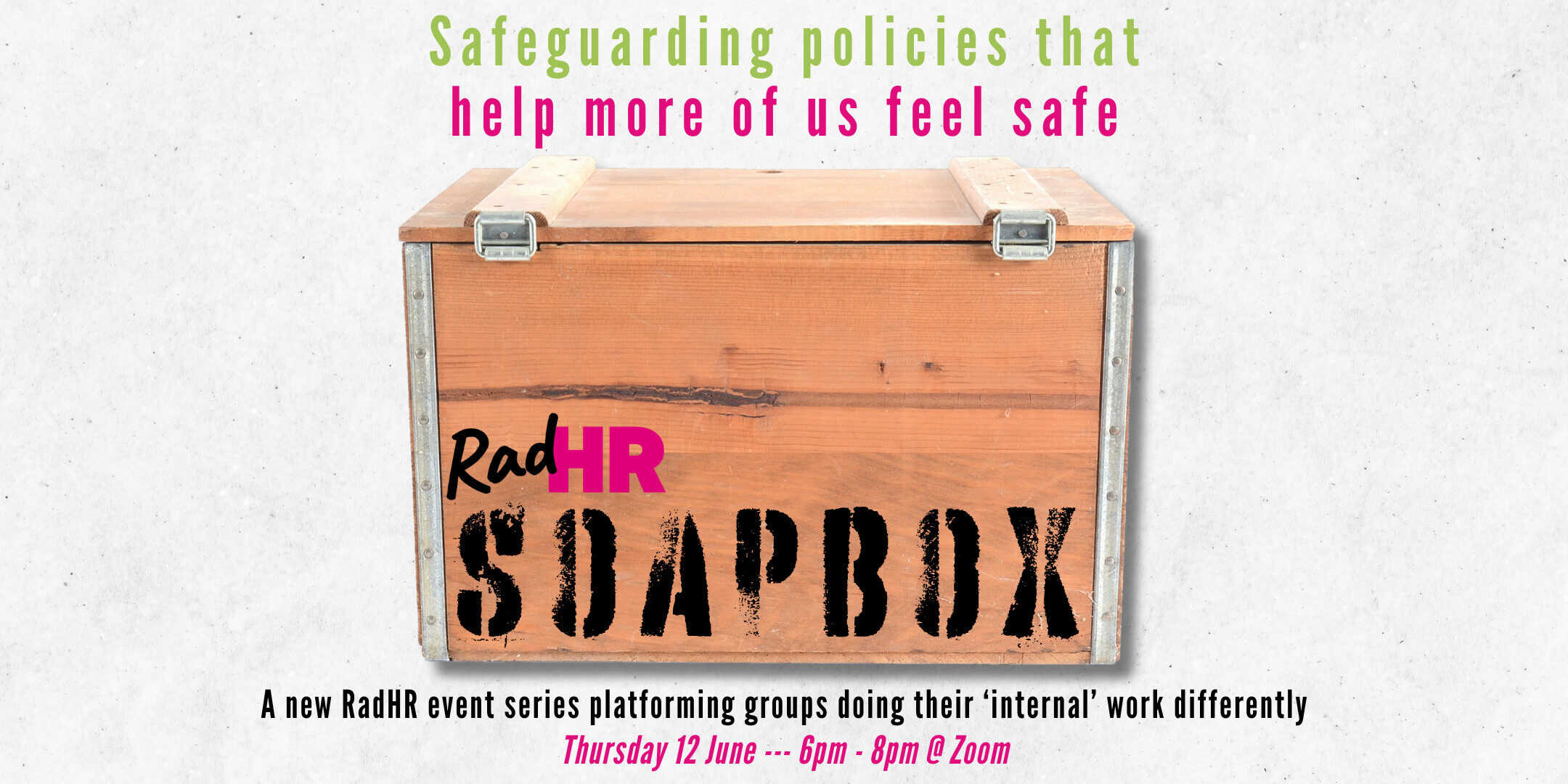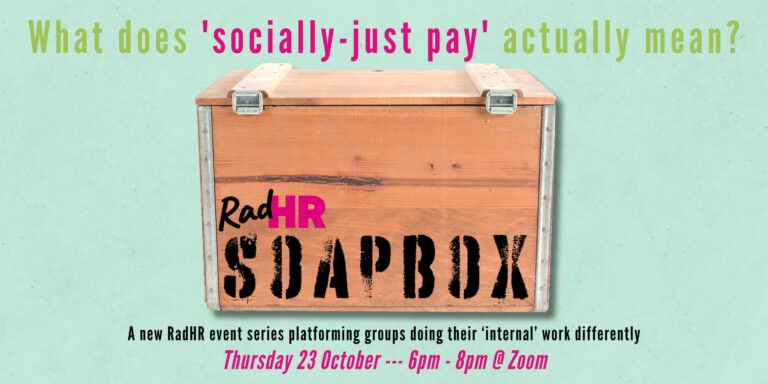The primary purpose of safeguarding policies, in theory, is to keep people in our organisations safe.
Simple, right? Not quite.
As many of us know far too well, when the practices that underpin mainstream contemporary approaches to safeguarding—such as a strong emphasis on ‘calling the cops’ (or social services, or medical professionals)—are not only normalised but actively expected by the wider support networks that make our work possible (funders, local councils, regulatory bodies, to name a few), it leaves little room for us to make honest and holistic decisions about what actually keeps people in our groups safe.
In the worst-case scenarios, traditional approaches to safeguarding subject our groups to significant and entirely avoidable harm.
With this in mind, on the 12th June 2025, we hosted our first ever Soapbox online event: ‘Safeguarding policies that help more of us feel safe’.
The RadHR Soapbox event series aims to highlight groups that we think have done some really powerful work around a particular policy, process or way of working.
For our inaugural Soapbox, we were fortunate enough to be joined online by Roxy Legane (Kids of Colour), Alex Johnston (Co-Author of the Radical Safeguarding Workbook), and Latifa Akay (Co-Author of the Radical Safeguarding Workbook and The Shape of Safety report). We heard from speakers about their experiences of challenging the core ideas of state-mandated ‘safeguarding’ policies and developing alternatives that meet the actual needs of those affected by them.
Why safeguarding?
There are few organisational policies that cause as much harm as so-called ‘safeguarding’ policies. The idea that ‘calling the cops’ (or social services, or medical professionals) is the best response when someone is in danger, is the crux of a massive social divide: those who have experienced these systems as forms of support vs those who have experienced them as forms of oppression.
Of course, there will always be grey areas, but for anyone who has faced or may face imprisonment, deportation, children taken into care or other violent state interventions, the risk of engaging with those systems will always be too immense to take chances with. Safeguarding policies – almost by their nature – fail to acknowledge this reality.
Organisations which recognise the threat that the state represents to so many, are often stuck in an impossible position: to abide by mandated ‘safeguarding’ practices or to actually support those in their communities facing danger. Doing both can feel impossible.
Over the past few years, we’ve been lucky enough at RadHR to see and engage with radical policies from all kinds of organisations–with over 75 now in the policy library! But what we’ve noticed is that we rarely see safeguarding. So why?
What happened at the event?
The first half of this event centred on a facilitated discussion between the panelists. After this, attendees split up into themed breakout rooms facilitated by the speakers and members from RadHR for small-group discussion and sharing about the questions raised. Speakers shared their reflections on a series of prompt questions, including:
- What is fundamentally wrong with the ways most institutions think about safety and safeguarding?
- Were there any particular moments or events that shifted your thinking on safeguarding?
- Can you tell us about an experience when you were able to practice a version of safeguarding that felt more aligned with your values?
After this, attendees were free to choose the breakout room that most appealed to them for discussion, with themes for the rooms including:
| * What do we mean by safety? |
| * What can we do to keep each other safe? |
| * What kinds of systems of safety are realistic for us? |
| * What are the limits of the law? |
| * What other policies in our groups are affected by our approaches to safeguarding? |
What was clear from conversations in the breakout rooms is that safeguarding is an area a lot of us have struggled with, and often the solution is that groups’ on-paper policies vs their real-life practices end up looking quite different from one another. What’s more, for groups that are working with specific communities (eg. young people) there’s more to consider and, often, more at stake.
So… what’s next?
With safeguarding, it can be hard to unpick what are the legal red lines vs what are just assumptions about what the law says–and this is compounded when you’re grappling with these questions alone.
For many people in the RadHR community, we are the only ‘ops’ or ‘policy’ person in our group. This can mean that we can feel left on our own with some of the questions these more challenging policy areas present.
Following on from this event, we’re keen to keep facilitating sharing between people to help alleviate this—whether through the forum, Lunch Meets (next one is Thurs 7 August), or our new local events. It’s more than likely there are others grappling with the same issues as you who you can connect with through the site.
If you have an idea for an upcoming Soapbox, please get in touch. You can also keep in the loop about future events by signing up to our mailing list.
And, once again, many thanks to the speakers who joined us for the event and shared their experiences:
Roxy Legane, Kids of Colour (Manchester)
kidsofcolour.com
Alex Johnston, Co-author of The Radical Safeguarding Workbook
wearetransformingtogether.com/
Latifa Akay, Co-author of The Radical Safeguarding Workbook & The Shape of Safety report
nsun.org.uk/resource/the-shape-of-safety-2024
Thank you also to Berta Marie Chicote from Nanny Solidarity Network (NSN), who was sadly unable to make the event, but whose work you can find out more about on their website.




Join the discussion at community.radhr.org